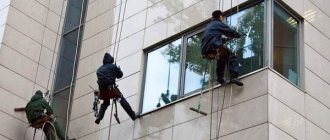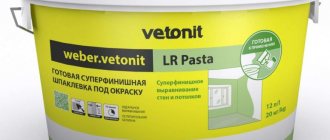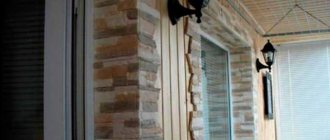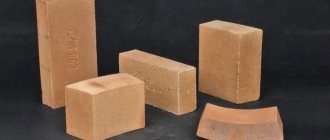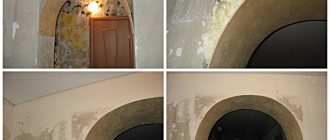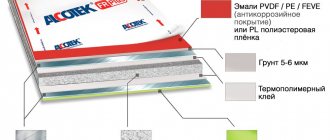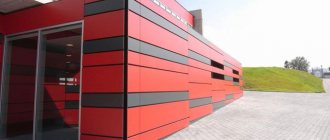- Advertising and production company
- Services
- Milling cutting of materials in Moscow
- Composite milling
The cost of milling cutting of composites Technology of milling composites Features of milling cutting of aluminum panels from composites Where composites are used Order milling of automatic transmission Video of sampling of composites with a milling cutter Send a request Equipment
Advertising and production company LiderPOSM provides services for cutting composite panels in Moscow. The thickness of the material for milling on a CNC machine is up to 4 mm.
ACPs are used in advertising structures, signs, exterior cladding, and interior cladding due to the wide range of colors and textures and relative ease of processing.
Prices
Order automatic transmission milling
Milling of aluminum composite panels AlcoteK® 160 - 250 rub/sq.m.
AlcoteK FR, AlcoteK FR+, AlcoteK B2.
Order UPC milling
Milling of steel composite panels AlcoteK® 350 - 450 RUR/sq.m.
AlcoteK ST.
Order rolling
Cutting to size with rolled edges 50 - 80 rub/l.m.
With the sheet method of mounting the AlcoteK automatic transmission.
Order rolling
Rolling the edge of the finished panel from 40 rubles/linear meter.
With the sheet method of mounting the AlcoteK automatic transmission.
Order rolling
Individual order for decorating edges of complex shapes, estimated price
When placing a complex order - discounts!
Where is the composite used?
The spread of composite panels among a wide range of users is not at all accidental and can be explained, first of all, by the versatility of this material - it is equally good for use for both advertising and construction purposes. Composite materials make it possible to produce interesting advertising structures and change the appearance of buildings and structures beyond recognition.
Areas of application for composite milling include:
:
- Urban planning solutions: interior decoration, cladding of facades, balconies, tunnels;
- Signs: pylons, racks, facades.
- Corporate style: information signs, gas stations, banks, supermarkets;
Custom manufacturing technology is used in the production of advertising signs or stands. But when cladding facades and creating friezes, it is most often necessary to make a cassette from a composite panel. To obtain a product of the required shape, a simple processing technology is used, which includes several stages:
- Cut to the required sheet size;
- Milling grooves;
- Carving corners and, if necessary, loops;
- Bending along the milling line.
For facing cassettes or boxes, it is necessary to rivet the bent corners so that the cassette is strong and holds its shape. For further fastening of cassettes to metal profiles, there are a variety of systems from different manufacturers.
MILLING AUTOMATIC TRANSMISSION
Milling can be done in the shop on a bench saw with a milling attachment, CNC machines with a milling attachment, or directly on the construction site using hand tools.
|
|
|
V-shaped or rectangular grooves are milled from the back of the panel. At the same time, the external aluminum cladding and part of the composite filler with a thickness of at least 0.8 mm are preserved. The grooves can be made with a panel saw with a routing device, on a CNC machine with a routing device, or using a hand router.
The milled composite sheet can be bent to form both external and internal corners.
| Angles up to 90° | Milled sheet AKP up to 90° | Usage example |
| Angles up to 135° | Milled sheet AKP up to 135° |
|
| Angles up to 180° | Milled sheet AKP up to 180° |
|
Circular router cutters with carbide tips for vertical panel saws.
Please note that the linear dimensions of the curved panel will increase by 1–3 mm due to the appearance of a small bending radius. To more accurately determine this correction, it is necessary to make test cuts and measure the actual results obtained. To bend pre-milled panels, it is recommended to use a bending machine or a table with a flat surface. The material should be bent at a temperature not lower than 10ºС.
4.1. Polymers in construction
Speaking about the use of new materials based on plastics in the construction industry, it is worth noting the following. If “traditional” materials are mainly used in civil engineering, then in such sectors as the construction of bridges, railways, bridges, etc., polymer composites have good prospects.
Construction Construction is a vague term that covers a variety of mechanical loads, from the light loads experienced by panels, enclosures, equipment enclosures or soundproof walls, to the ultra-high pressure experienced by bridge supports.
To find solutions applicable to these disparate situations, purified plastics or composites are used in civil engineering:
— Typically used in lightweight building structures.
— Periodically used in specialized (niche) structures — Intended exclusively for large building structures, such as bridges.
Figure 1 shows several examples.
Civil engineering uses traditional materials such as concrete and steel, which have low component costs but high processing and installation costs and low machinability. The result of the introduction of plastics may be the following: :
— Reduction of final costs.
- Productivity increase.
- Weight loss.
— Increased design capabilities compared to wood and metals.
— Corrosion resistance.
— Easy to process and install.
“Certain polymers can transmit light and even be transparent.
— Easy maintenance.
— Insulating properties.
On the other hand, aging and mechanical resistance should be taken into account. However, some projects built in the mid-1950s using fiberglass-reinforced polyester have demonstrated significant durability.
The civil engineering industry is a conservative one and barriers to expanding the use of plastics and composites include::
— Poor knowledge and little experience in working with these materials in the civil engineering industry.
— Difficulty in transferring experience accumulated in other industries.
— Difficulty in selecting and sizing these materials.
— The difficulty of mutual understanding between representatives of different professions with very different mentalities.
— The opinion about plastics that has developed in society.
— Harsh environmental conditions at the construction site.
— Difficult application conditions that do not entirely coincide with the practice and qualifications of builders.
The progressive response of plastics to the increasing demands of construction: from refined thermoplastics to oriented carbon fiber composites Composites are of particular interest to the construction industry due to their high performance/weight/final cost ratios.
Moreover, the ability to set direction in composite reinforcement expands design possibilities compared to steel.
Table 1 compares several cases, but there are also other intermediate solutions.
Table 1: Examples of properties from purified thermoplastics to unidirectional composites
| Refined plastics and plastics reinforced with short glass fibers | |||
| Characteristic | Polyurethane produced by enhanced reaction injection molding | Polymethylmethacrylate for soundproof walls | |
| Fiberglass,% | 15 | 0 | |
| Density, g/cm3 | 1.14 | 1. 19 | |
| Tensile strength, MPa | 20 – 27 | 70 – 80 | |
| Tension at break,% | 75 – 200 | 5 | |
| Bending modulus, GPa | 0.7 – 1.2 | 3.3 | |
| Impact of Izod notch, J/m | 160 – 430 | ||
| Impact of notch according to Izod, kJ/m2 | — | 1.6 | |
| Glass fiber reinforced thermoset plastic for BMC (glass-filled compression molding premix) and SMC (sheet molding material) | |||
| Characteristic | BMC | SMC | |
| Fiberglass weight | 10 – 20 | 25 – 30 | |
| Density, g/cm3 | 1.7. – 2 | 1.7. – 1.9 | |
| Tensile strength, MPa | 30 – 40 | 48 – 110 | |
| Tension at break,% | — | 1.6. – 2 | |
| Bending modulus, GPa | 5 – 11 | 6 – 16 | |
| Impact of Izod notch, J/m | 260 – 400 | ||
| Epoxy resin reinforced with unidirectional carbon fiber | |||
| Carbon fiber weight,% | 65 | ||
| Density, g/cm3 | 1.5. – 1.7 | ||
| Tensile strength, MPa | 1,500 — 3,000 | ||
| Tension at break,% | 0.5 – 1.7 | ||
| Bending modulus, GPa | 100 – 400 | ||
Figure 2 shows a diagram of the increase in mechanical efficiency in accordance with polymer reinforcement.
Material costs for composites always exceed those for metal, and the most expensive is carbon fiber reinforcement (see Figure 3). These costs for plastics and composites are offset by other benefits.
In exchange for the high cost of the material, composites offer a unique set of interesting properties:
- Weight reduction - Reduced assembly costs - Installation - Reduced operating costs - Reduced bottom line costs - Corrosion resistance - Safety.
Weight reduction The density of steel exceeds the density of composites by the following factors:
- 3.9 against glass fiber reinforced epoxy.
- 5.1 against carbon fiber reinforced epoxy.
- 5.8 against Kevlar fiber reinforced epoxy.
The weight savings potential of using composites instead of steel is less significant. In most currently proposed solutions, they can be estimated at approximately 15-30%.
ROLLING THE EDGE
When choosing a sheet method for fastening the AlcoteK® automatic transmission on the facade, it should be taken into account that the edges of the panel must be pre-rolled. In this case, rolling is performed along the perimeter of the facing panel with a bend to the back side of at least 5.00 mm using a double type of rolling (according to the results of full-scale fire tests).
In the case of sheet fastening of AlcoteK® UPC, it is possible to use sheets without rolling the edges.
Rolling of the edges of the panels is carried out on an edge-processing machine. This operation is required if you choose the sheet method of mounting the AlcoteK automatic transmission. In addition, the aesthetic edge allows for more widespread use of ACP in the manufacture of decorative facade elements, design structures, etc.
There are 4 types of rolling:
Composition and structure of the composite
Composites are multicomponent materials consisting of a polymer, metal, carbon, ceramic or other base (matrix), reinforced with fillers made of fibers, whiskers, fine particles, etc. By selecting the composition and properties of the filler and matrix (binder), their ratio , orientation of the filler, it is possible to obtain materials with the required combination of operational and technological properties. The use of several matrices (polymatrix composite materials) or fillers of different natures (hybrid composite materials) in one material significantly expands the possibilities of regulating the properties of composite materials. Reinforcing fillers absorb the main share of the load of composite materials.
Based on the structure of the filler, composite materials are divided into fibrous (reinforced with fibers and whiskers), layered (reinforced with films, plates, layered fillers), dispersed reinforced, or dispersion-strengthened (with filler in the form of fine particles). The matrix in composite materials ensures the solidity of the material, the transmission and distribution of stress in the filler, determines heat, moisture, fire and chemical properties. durability.
Based on the nature of the matrix material, polymer, metal, carbon, ceramic and other composites are distinguished.
Composite materials reinforced with high-strength and high-modulus continuous fibers are most widely used in construction and technology. These include: polymer composite materials based on thermosetting (epoxy, polyester, phenol-formal, polyamide, etc.) and thermoplastic binders, reinforced with glass (fiberglass), carbon (carbon fiber), org. (organoplastics), boron (boroplastics) and other fibers; metallic composite materials based on Al, Mg, Cu, Ti, Ni, Cr alloys, reinforced with boron, carbon or silicon carbide fibers, as well as steel, molybdenum or tungsten wire;
Composite materials based on carbon reinforced with carbon fibers (carbon-carbon materials); composite materials based on ceramics reinforced with carbon, silicon carbide and other heat-resistant fibers and SiC. When using carbon, glass, aramid and boron fibers contained in the material in an amount of 50-70%, compositions were created (see table) with shock. strength and elastic modulus 2-5 times greater than that of conventional structural materials and alloys. In addition, fibrous composite materials are superior to metals and alloys in fatigue strength, heat resistance, vibration resistance, noise absorption, impact strength and other properties. Thus, reinforcing Al alloys with boron fibers significantly improves their mechanical characteristics and makes it possible to increase the operating temperature of the alloy from 250-300 to 450-500 °C. Reinforcement with wire (from W and Mo) and fibers of refractory compounds is used to create heat-resistant composite materials based on Ni, Cr, Co, Ti and their alloys. Thus, heat-resistant Ni alloys reinforced with fibers can operate at 1300-1350 °C. In the manufacture of metal fiber composite materials, the application of a metal matrix to the filler is carried out mainly from a melt of the matrix material, by electrochemical deposition or sputtering. The molding of products is carried out by Ch. arr. by impregnating a frame made of reinforcing fibers with a molten metal under pressure up to 10 MPa or by combining foil (matrix material) with reinforcing fibers using rolling, pressing, extrusion under heating. to the melting temperature of the matrix material.
One of the common technological methods for manufacturing polymer and metallic materials. fibrous and layered composite materials - growing filler crystals in a matrix directly during the manufacturing process of parts. This method is used, for example, when creating eutectics. heat-resistant alloys based on Ni and Co. Alloying of melts with carbide and intermetallic. compounds, which form fibrous or plate-like crystals when cooled under controlled conditions, leads to strengthening of the alloys and makes it possible to increase their operating temperature by 60-80 oC. carbon-based composite materials combine low density with high thermal conductivity, chemical. durability, constancy of dimensions with sudden changes in temperature, as well as with an increase in strength and elastic modulus when heated to 2000 ° C in an inert environment. For methods of producing carbon-carbon composite materials, see Carbon plastics. High-strength composite materials based on ceramics are obtained by reinforcement with fibrous fillers, as well as metallic ones. and ceramic dispersed particles. Reinforcement with continuous SiC fibers makes it possible to obtain composite materials characterized by higher viscosity, bending strength and high resistance to oxidation at high temperatures. However, reinforcing ceramics with fibers does not always lead to this. increasing its strength properties due to the lack of elastic state of the material at a high value of its elastic modulus. Reinforcement with dispersed metallic particles allows you to create ceramic-metallic. materials (cermets) with higher strength, thermal conductivity, resistance to thermal shock. In the manufacture of ceramics Composite materials are usually used by hot pressing, pressing with the last. sintering, slip casting (see also Ceramics). Reinforcement of materials with dispersed metallic materials. particles leads to a sharp increase in strength due to the creation of barriers to the movement of dislocations. Such reinforcement ch. arr. used in the creation of heat-resistant chromium-nickel alloys. The materials are obtained by introducing fine particles into the molten metal with the last. conventional processing of ingots into products. The introduction of, for example, ThO2 or ZrO2 into the alloy makes it possible to obtain dispersion-strengthened heat-resistant alloys that operate for a long time under load at 1100-1200 °C (the performance limit of conventional heat-resistant alloys under the same conditions is 1000-1050 °C). A promising direction for creating high-strength composite materials is the reinforcement of materials with whiskers (“whiskers”), which, due to their small diameter, are practically free of defects found in larger crystals and have high strength. max. practical Of interest are crystals of Al2O3, BeO, SiC, B4C, Si3N4, AlN and graphite with a diameter of 1-30 microns and a length of 0.3-15 mm. Such fillers are used in the form of oriented yarn or isotropic layered materials such as paper, cardboard, and felt. composite materials based on an epoxy matrix and ThO2 whiskers (30% by weight) have a strength of 0.6 GPa and an elastic modulus of 70 GPa. The introduction of whisker crystals into a composition can give it unusual combinations of electrical properties. and mag. St. The choice and purpose of composite materials are largely determined by the loading conditions and operation of the part or structure, technol. possibilities. max. polymer composite materials are available and mastered. A large range of matrices in the form of thermosetting and thermoplastic. polymers provides a wide selection of composite materials for work ranging from negative. temperature up to 100-200°C - for organoplastics, up to 300-400°C - for glass, carbon and boron plastics. Polymer composite materials with a polyester and epoxy matrix operate up to 120-200 °C, with phenol-formaldehyde - up to 200-300 ° C, polyimide and silicone. - up to 250-400°C. Metallic composite materials based on Al, Mg and their alloys, reinforced with fibers from B, C, SiC, are used up to 400-500°C; composite materials based on Ni and Co alloys operate at temperatures up to 1100-1200 °C, based on refractory metals and compounds. - up to 1500-1700°C, based on carbon and ceramics - up to 1700-2000°C. The use of composites as structural, heat-protective, anti-friction, radio and electrical equipment. and other materials make it possible to reduce the weight of a structure, increase the resources and power of machines and units, and create fundamentally new units, parts and structures. All types of composite materials are used in the chemical, textile, mining, and metallurgical industries. industry, mechanical engineering, transport, for the manufacture of sports equipment, etc.
3. Evaluation of the matrix and strengthener in the formation of the properties of the composite
CUTTING COMPOSITE PANELS
Panel cutting is carried out using two methods – chopping and cutting. Sawing is carried out using a circular or band saw, jigsaw or on a bench machine. The tool must have carbide teeth. The width of the cutting part is 2-4 mm, the teeth have a trapezoidal, rectangular or mixed shape.
AlcoteK® can be cut with a traditional guillotine cutter. A cutting angle ≤ 1.5º and a minimum clearance (paper test) are prerequisites for best cutting quality.
To prevent damage to the cover sheet, it is necessary to provide protective rubber pads to the guillotine holders.
ROLLING (BENDING) PANELS
AlcoteK® composite panels can be curved using a roll bending machine - typically with three or four shafts. The panels can be easily rolled on shafts of various diameters. The minimum radius is 270 – 300 mm. Processing of the material should be carried out taking into account cutting the sheet on both sides by 80 - 100 mm
Bending shafts that have been used for other metals must be thoroughly cleared of swarf before processing AlcoteK® composite panels.
The material should be bent at a temperature not lower than +10ºС
|
|
|
3.2. Composite materials with non-metallic matrix
Composite materials with a non-metallic matrix have found wide application. Polymer, carbon and ceramic materials are used as non-metallic matrices. The most widely used polymer matrices are epoxy, phenol-formaldehyde and polyamide. Coked or pyrocarbon carbon matrices are obtained from synthetic polymers subjected to pyrolysis. The matrix binds the composition, giving it shape. Strengtheners are fibers: glass, carbon, boron, organic, based on whisker crystals (oxides, carbides, borides, nitrides and others), as well as metal (wires), which have high strength and rigidity. The properties of composite materials depend on the composition of the components, their combination, quantitative ratio and strength of the bond between them. Reinforcing materials can be in the form of fibers, strands, threads, tapes, multilayer fabrics. The hardener content in oriented materials is 60-80 vol.%, in non-oriented materials (with discrete fibers and whiskers) 20-30 vol.%. The higher the strength and elastic modulus of the fibers, the higher the strength and stiffness of the composite material. The properties of the matrix determine the strength of the composition under shear and compression and resistance to fatigue failure. Based on the type of reinforcement, composite materials are classified into glass fibers, carbon fibers with carbon fibers, boron fibers and organofibers. In layered materials, fibers, threads, tapes impregnated with a binder are laid parallel to each other in the laying plane. Flat layers are assembled into plates. The properties are anisotropic. For the material to work in a product, it is important to take into account the direction of the acting loads. It is possible to create materials with both isotropic and anisotropic properties. Fibers can be laid at different angles, varying the properties of the composite materials. The flexural and torsional rigidities of the material depend on the order in which the layers are laid across the thickness of the package. Reinforcers of three, four or more threads are used. The most widely used structure is a structure of three mutually perpendicular threads. Reinforcers can be located in the axial, radial and circumferential directions. Three-dimensional materials can be of any thickness in the form of blocks or cylinders. Bulky fabrics increase peel strength and shear strength compared to laminated fabrics. A system of four threads is constructed by decomposing the reinforcement along the diagonals of the cube. The structure of four threads is equilibrium and has increased shear rigidity in the main planes. However, creating four-directional materials is more difficult than creating three-directional materials.
4. Construction materials - composites
MANUFACTURING CASSETTES FROM ALUMINUM COMPOSITE PANELS
| The cassette is made with cut-out eyes, which are hung on the pins of the “sled” installed in the vertical guides of the ventilation facade subsystem. The width of the flange must be at least 50 mm. | ||
| The cassette is equipped with special “ikle” hooks, which are hung on the “sled” pins installed in the vertical guides of the ventilation façade subsystem. The width of the flange can be minimal - 30 mm. |
4.2. Composites and concrete
The advantages of composite materials are well demonstrated in concrete reinforcement and construction.
Inexpensive and versatile, concrete is one of the best building materials in many offerings. A true composite, typical concrete consists of gravel and sand bonded together in a cement matrix, with metal reinforcement usually added to enhance strength. Concrete behaves excellently under compression, but becomes brittle and weak under tension. Tensile stresses, as well as plastic shrinkage during curing, lead to cracks that absorb water, which ultimately leads to corrosion of metal reinforcement and a significant loss of concrete integrity when the metal fails.
Composite reinforcement has established itself in the construction market due to its proven resistance to corrosion. New and updated design guidelines and test protocols make it easier for engineers to select reinforced plastics.
Fiber-reinforced plastics (fiberglass, basalt plastic) have long been considered as materials that can improve the characteristics of concrete.
SEQUENCE OF FOLDING CASSETTES WITH LUGS
| Cutting a cassette from an automatic transmission sheet | Lug cassette | Cassette with “ikles” |
| (1)Cut the V-slot | (2) Bend the narrow part at an angle greater than 90° | (3) Bend back 90°, bend the triangle |
| (4)Fold the triangle with the side | (5)Folding the top edges | Attaching the finished cassette with lugs |
